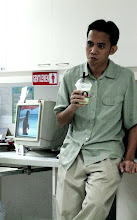People with disabilities is a potential marget segment. First, the group is very large. With the increase in the number of elderly people in Europe and
Well, Technologies are already available to alleviate many of the problems faced by people with disabilities in using a public telephone, but only a few companies provide the appropriate facilities. But advances in technology will create exciting new solutions as well as some new problems.
As we define this new market segment, we should point toward an understanding of the market. We noted some facts about PWDs that are vital to the development of marketing plan and strategies:
1. Of the 54 million of people limited in their activities due to long-term disability...
· 73% are the heads of households
· 46% are married
· 58% own their own homes
· 77% have no children
· 48% are principal shoppers
2. In 1995, people with disabilities spent $81.7 billion on travel. This did not include the significant expenditures of their families, friends, and escorts.
(Source: Society for Accessible Travel and Hospitality).
3. The aggregate income of people with disabilities tops $1 trillion. This includes $220 billion in discretionary income.
4. Of the 69.6 million families in the
5. Four out of 10 people with disabilities conduct business and personal activities online, spending an average of 20 hours per week logged on to the Internet. That's more time on average than non-disabled Web surfers spend online
6. Among people with disabilities, 48% say that the Internet has significantly improved the quality of their lives. Compare this to only 27% of adults without disabilities.
7. According to a General Accounting Office report, implementing the access provisions of theADA has increased revenues in the hotel and hospitality industry by 12 percent.
8. Companies marketing to people with disabilities can reach as many as four in every 10 consumers.
9. Among people with disabilities, 48% say that the Internet has significantly improved the quality of their lives. Compare this to only 27% of adults without disabilities.
10. Three in four adults say they would be likely to switch to a brand associated with a "good cause."
So, promotional Strategies should focus on telecommunication, website accessibility, Advisory committees, and empowering PWDs. Some of the companies view PWD as a niche market at best, and unwanted intrusion at worst. However, we believe that when companies properly managed them, programmes which address the needs of people with disabilities can open up new market opportunities and be profit generators rather than economic burdens. Also these more enlightened companies are reaping a marketing benefit to their core business from being seen to be balancing human need against the commercial imperative.







